Today many birds were seen, but many will soon be forgotten. Yet one master African hunter is indelibly etched on every African child's mind, the Long-crested eagle.
Growing up in the Gorilla Highlands, this is the bird that children asked whether they would die one day or live forever. Its the one that village belles asked whether they would be married in the East or in the West.
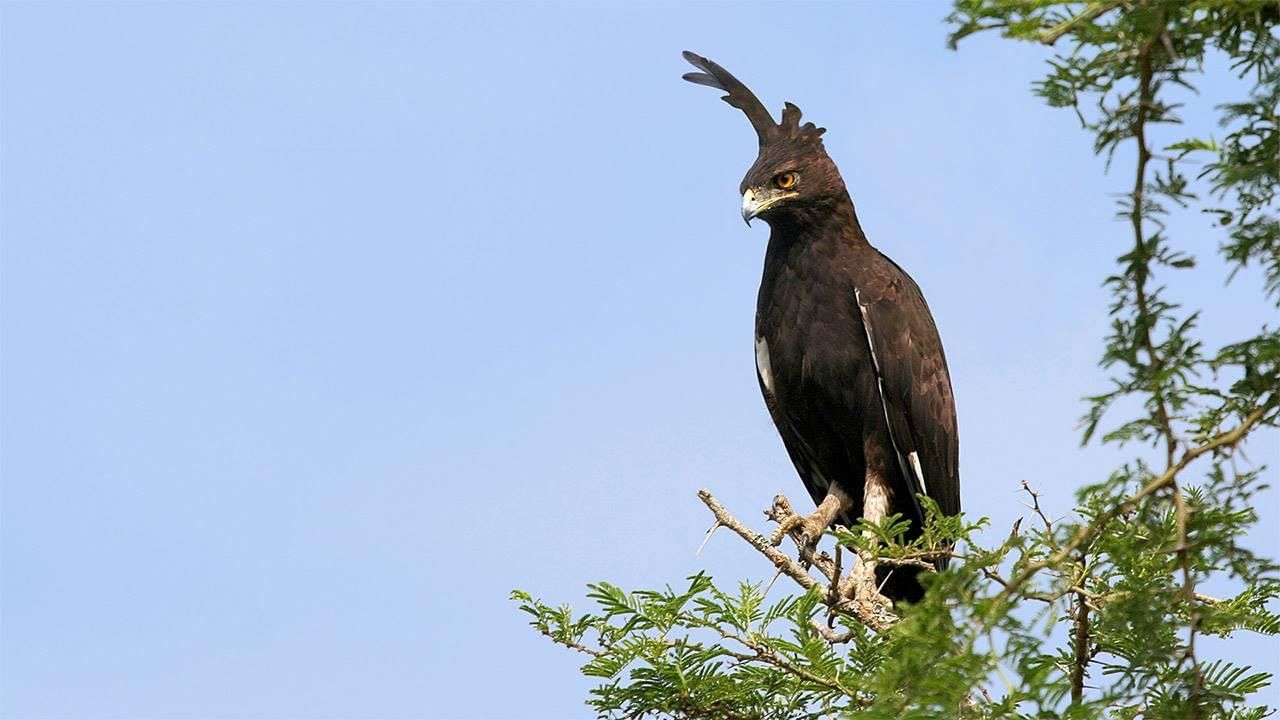 With just a flick of its long crest, downwards or up, this way or that way, one's fate was sealed.
With just a flick of its long crest, downwards or up, this way or that way, one's fate was sealed.
Ladies and gentlemen, meet Kamushungushungu, the African bird of prophecy, the "sit and wait" hunter which waits on a perch, scanning the ground and swoops on prey with a gliding flight.
Here are its 7 behavioral facts:
1. It mostly feeds on rodents, which is a big part of its conservation story. Its pest control reputation in Agricultural Africa is only shrouded by its prophetic myth. It however also feeds on other birds, including owls and the young of other raptors, frogs and lizards, invertebrates and even fish and fruit.
2. The long-crested eagle is territorial. Thats why they dont flock.
3. The male displays during courtship, performing steep dives and also using a rocking, level display flight, calling frequently during these displays.
4. Both sexes build the nest, constructing a stick platform lined with green leaves. The nest is normally situated in the mid-canopy and very close to the trunk of a tree near the forest edge.
5. It breeds all year but most eggs are laid in July to November season. The female lays 1-2 eggs which are laid asynchronously, as much as two weeks apart.
6. The female takes most of the burden of incubating the eggs and the female begins incubation as soon as the first egg is laid which means that hatching is also asynchronous. Incubation lasts 42 days (twice that of domestic hens).
7. Interestingly, during incubation, the male provides the female with food.@Godfrey
#Earthshots
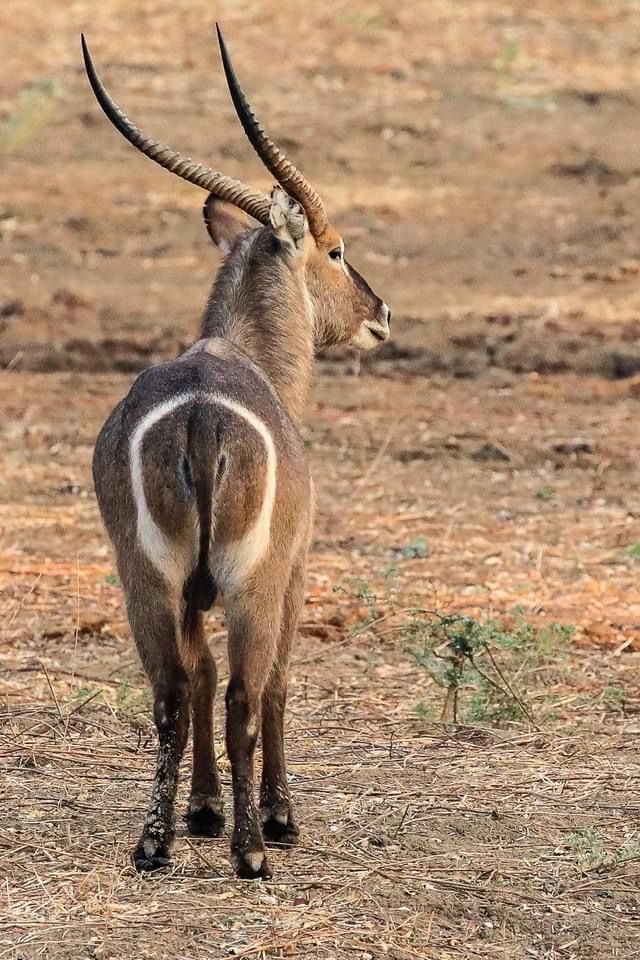 The white ring around the waterbuck’s hindquarters has led to many tales. A favorite is that they were the first animals to use the toilet on Noah’s Ark. The newly-installed toilet seats on the ark were still wet with paint and left a distinctive white ring on their rumps. Despite these bucks being a part of the ‘butt joke’, there are valid reasons for the white markings on their hindquarters. Flashes of color often scare off predators and act as a ‘follow me’ sign, helping other waterbucks flee when in danger.
The white ring around the waterbuck’s hindquarters has led to many tales. A favorite is that they were the first animals to use the toilet on Noah’s Ark. The newly-installed toilet seats on the ark were still wet with paint and left a distinctive white ring on their rumps. Despite these bucks being a part of the ‘butt joke’, there are valid reasons for the white markings on their hindquarters. Flashes of color often scare off predators and act as a ‘follow me’ sign, helping other waterbucks flee when in danger.
Waterbuck are sexually dimorphic, meaning males and females have external differences apart from their reproductive organs.
Males can be up to 25% larger than their female counterparts and they carry the defining feature of beautiful, long, ringed horns.
These horns curve backward and then forward and vary in length from 55 cm to 99 cm. The age of the bull determines the length of the horns.
Waterbuck horns will begin to develop at around 8 to 9 months and mark the young buck’s time to separate from the herd. Young males form bachelor groups remain together until they mature and move on to make their own herd. Waterbucks’ diets are rich in protein and other nutrients. This includes coarse grasses that are seldom eaten by other plain animals and long sweet grasses like buffalo grass.
During the dry season, they supplement their diet by browsing on leaves from shrubs and certain trees, such as the Sweet thorn (Vachellia karroo). At times, you will find them shoulder-deep in water, eating roots and other aquatic plants.
They also enjoy browsing on certain fruits, especially the marula fruit during the ripe season. These antelope typically eat in the mornings and late afternoons and chew cud for the remainder of the day.
These herbivorous animals have remarkably high water requirements. They need to drink often, which is one reason why they remain close to permanent water points at all times. You’ll often find them nestled in reed beds near rivers and dams, or on floodplains.
Common waterbuck are social animals. They live in herds or groups of up to 12. Male antelopes are dominant over a certain territory, and their herd consists of females, young bachelors, and calves.
The herds are constantly changing, as individuals can join or leave at any time, provided there aren’t other males looking to dominate the territory.
When a bachelor threatens the territory of a herd leader, the dominant male will posture aggressively and even start a fight if necessary. These fights can be fatal, as the waterbuck uses its long, strong horns in combat.
Typically, a waterbuck will live up to 18 years in the wild. In general, 12-15 years is a good life for a wild waterbuck. @GodfreytheGuide #Antelope #https://www.instagram.com/p/CQo-ZP4gIwZ/?utm_medium=copy_link
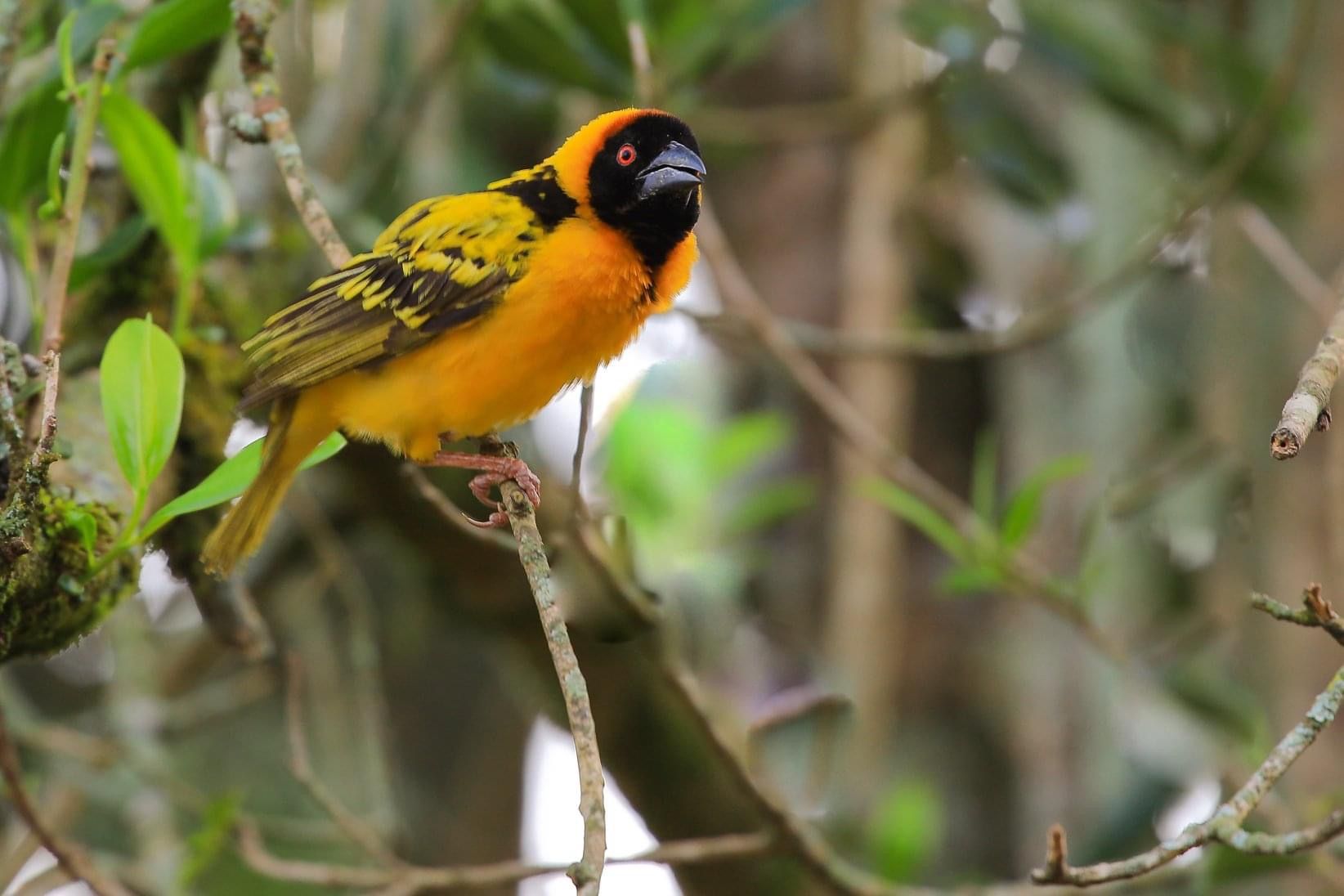 Bigodi wetland sanctuary, Uganda, 2017.
Bigodi wetland sanctuary, Uganda, 2017.
The Village Weaver is one of the most common, widespread weaver species. It is larger than most weavers, with red eyes in both sexes and a heavy black bill. The breeding male has the head mainly black, the nape, hindneck and breast below the black throat are chestnut. The back is spotted yellow. The breeding female is yellow below, and whiter on belly. The non-breeding birds are duller than the breeding female.
The Village Weaver inhabits bushy savanna, riverine woodland, wetlands, cultivated areas, rural villages, urban and suburban gardens, and villages and clearings in the forest. It is frequently associated with human habitation in west and central Africa. It is absent from arid regions, dense forests, and miombo woodland.
Its diet is seeds, including grass seeds and cultivated cereals. It is regarded as a pest in rice-growing areas, and also damages maize, sorghum and durra crops. It also feeds on fruit, nectar, and insects, such as beetles, ants, termites and their alates, grasshoppers, mantids, caterpillars, and bugs. It forages by gleaning vegetation, including tree trunks.
The Village Weaver is gregarious, being found in large flocks and in the non-breeding period joins large communal roosts.
It is highly colonial, with more than 200 nests in a single tree and colonies in excess of 1000 nests. The Village Weaver is polygynous, with up to five females simultaneously on the territory of a male, and up to seven during a season. Females may change mates in a season. Larger colonies appear to be more attractive to females, with a higher proportion of females per male.
When females enter a colony, males hang below their nest entrances while giving nest-invitation calls and flapping their wings to show the yellow underwings. The nest is spherical, sometimes with a very short entrance tunnel. The nest is woven by the male within a day, generally from strips torn from reed or palm leaves.
The male often includes a ceiling layer of broad leaves. The female lines an accepted nest with leaves, grass-heads and some feathers. Nests are suspended from drooping branches. A single male may build more than 20 nests in a season, and unused or old nests are regularly destroyed to make space for new nests. Empty nests may be occupied by other animals, including snakes, wasps, mice and bats, and nests may be used for breeding by a wide variety of species including Cut-throat Finches.
The eggs are white, pale green or blue, either plain or variably marked with red-brown speckling. Incubation is by the female only, for about 12 days. The chicks are usually fed by the female alone, but males in some parts help. Female Village Weavers recognize their own egg pattern, which is constant throughout her life, and discriminate against non-matching eggs. Nest predators include snakes, especially boomslang Dispholidus typus, monkeys and baboons, crows and raptors.
The longevity record is 14 years in the wild.
#Birdifeastafrica
#Earthshots
#Visitugandarwandatanzania.
MojoStreaming
Wildlife Photo Contest ends May 21, 2021, 11:00 P.M. Est
We are inviting you to submit YOUR photo of wildlife for
a chance to be featured in our promotional calendar The photo we choose for our cover also will receive a $500 cash prize https://www.mojostreaming.com/signup Deadline to submit your photo is May 21, 2021, 11:00 EST Free
to sign up & submit
To kick off our introduction to MojoStreaming, a
Wildlife Community for photographers and filmmakers. We are inviting you to
submit YOUR photo of wildlife for a chance to be featured in our promotional
calendar (a great opportunity to promote your work) The photo we choose for our
cover also will receive $500. It is free to enter and simple to do: Upload your
image by May 21st before 11:00 P.M. EST (National Endangered Species Day) Sign
up & Submit at https://lnkd.in/epesgnf
Once you sign up- all you do is click on the Upload button
and choose the Photo for the calendar album.
PS do not forget to check your spam
folder for an email confirmation.
There is more good news! If your photo is
featured in the calendar - we will send you a free calendar!
ALL entries will be featured on Mojostreaming- a great way to gain additional exposure. To learn
more about us: https://www.mojostreaming.com/static/about
All photos must be original work, taken by the entrants. No
third party may own or control any materials the photo contains, and the photo
must not infringe upon the trademark, copyright, moral rights, intellectual
rights, or rights of privacy of any entity or person.
You
grant to MojoStreaming a non-exclusive, worldwide, royalty-free, sublicensable, and transferable license to use, copy, modify (size), distribute and publish
your photo(s) on our MojoStreaming Website and our Social Media Sites. Your photo(s) may be used for marketing and
promotional purposes. You represent and warrant that you own or have all
necessary rights (including intellectual property rights) to your photo(s)
(including to grant the license above).
Entries
will be judged by the MojoStreaming shareholders. All decisions are final. The Company reserves
the right to disqualify any entry that is deemed inappropriate or does not conform
to stated contest rules.
By
entering the contest, entrants agree that photos submitted can be used by the MojoStreaming
are for marketing purposes and may be featured in our promotional 18-month
calendar.
Submissions
will not be accepted once the deadline lapses: (May 21, 2021, 11:00 p.m. EST)
The
winner will be contacted via the email address sometime between June 1 -4th
provided during entry. If no response is received after five business days, a new winner will be selected, and the previous winner will forfeit all rights to
the prize.
We
will also contact all entries that will be featured in the calendar via the email
address sometime between June-1-4th provided during entry. At this time, we will ask that you provide us
further information about you, and more information about your photography
business/hobby. We will want to feature
information about you and your work so our customers can learn more about the
work you do.
If
you have any questions, please contact Cami Ciotta at cami@mojostreaming.com

In this two-part series, read on to learn some interesting facts about the 10 most endangered animals in the world and how we, as a race, should be more cognizant of the plight of these beautiful creatures.
10. Gorillas
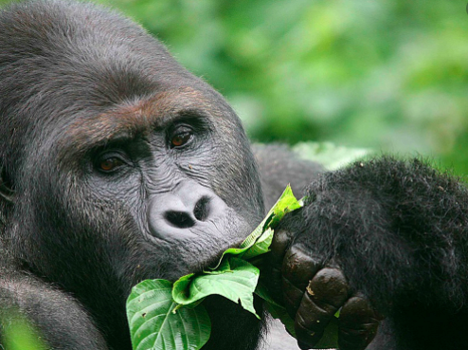
Gorillas share close to 97% of their DNA with humans! They are capable of feeling emotions and even behave like us sometimes – did you know they can laugh? There are two species, the Eastern Gorilla and the Western Gorilla, and they both have two subspecies. Three out of four are Critically Endangered on the International Union for Conservation of Nature (IUCN) Red List of Threatened Species. The only one that isn’t is the Mountain Gorilla, a subspecies of the Eastern Gorilla.
9. Rhinos
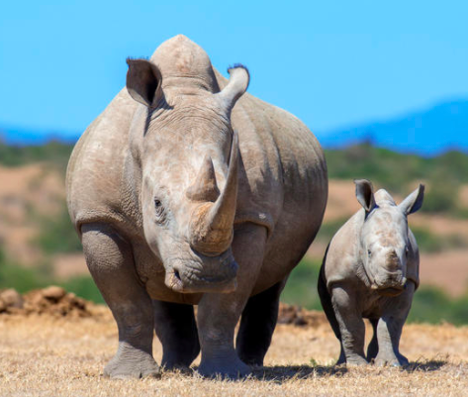
Rhinoceros comes from two Greek words Rhino and Ceros, which when translated into English mean nose horn. Human beings are almost entirely responsible for this beautiful creature nearing extinction. Poaching for their distinctive horns is their biggest threat. Three of the five species of rhinoceros are among the most endangered species in the world: the black rhino, Javan rhino and the Sumatran rhino. The Javan rhino is the closest to extinction with only about 50 left, of which most are in the Ujung Kulon National Park in Indonesia.
8. Sea Turtles

Hawksbill Turtles and Kemps Ridley Turtles are on the IUCN Red List of Threatened Species. Hunting is one of the biggest threats to sea turtles, with poachers targeting their eggs, shells, meat and skin. They are also at risk from habitat loss and pollution as well as climate change. Sand temperature determines the sex of hatchlings with eggs developing as females in warmer temperatures. That means even small temperature changes could skew the sex ratio of populations.
7. Saola
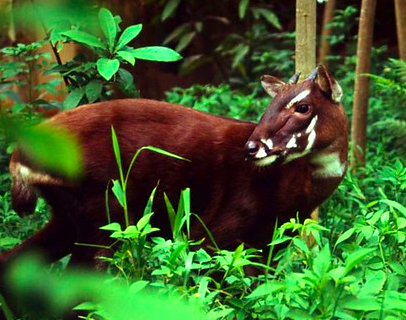
The Saola is one of the rarest large mammals on Earth. It was first discovered in 1992 in the Annamite Range in Vietnam. The Saola is elusive and so rarely seen it’s known as the Asian unicorn.
6. North Atlantic Right Whale
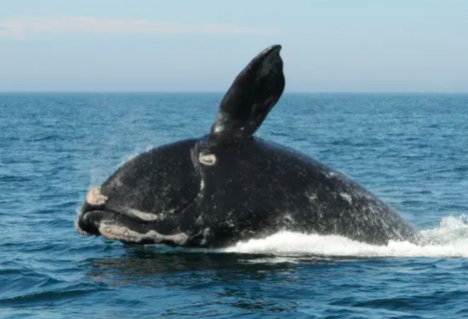
They are gentle giants that stay close to coasts and spend a lot of time at the surface skim feeding on zooplankton, all of which makes them an easy target for hunting. They were almost wiped out by hunters for their blubber and are now one of the most endangered large whales. They are now protected, and hunting is illegal, but population recovery is slow. They are only about 400 left, out of which, only 100 are breeding females. Females don’t breed for the first ten years of their life and then will give birth to a single calf every six to ten years. Vessel traffic also creates noise that interferes with their ability to communicate. Whales use sound to find mates, locate food and avoid predators, as well as to navigate and talk to each other.
Stay tuned for the Top 5 World’s Most Endangered Animal Species in the second part of the blog series. Can you guess which animals will feature on the IUCN Critically Endangered List?
*All Images for this blog sourced from Google and WWF